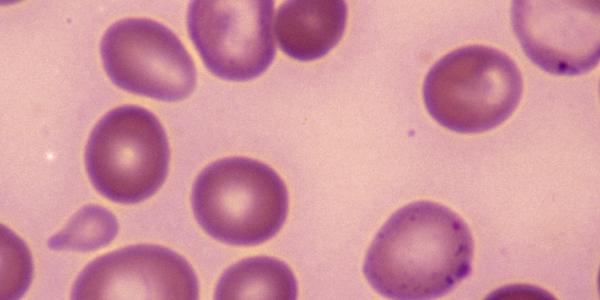
More than 30% of the global population is affected by anemia. Within the United States, anemia is the most common blood condition. Keep reading to learn how to recognize the warning signs.
Anemia results from a lack of healthy red blood cells to carry oxygen to your body's organs. There are many forms of anemia, each with its own causes and symptoms. This condition ranges from temporary to chronic and incurable, with many people experiencing mild to severe cases. Though anemia is often associated with children and pregnant women, it’s important to understand how common this condition is and how harmful it can be. According to the World Health Organization, it is estimated that one-third of all women of reproductive age are anemic. Older adults may overlook the signs and symptoms due to misperceptions or lack of awareness about this condition. But learning how to identify and combat anemia can greatly reduce your chances of developing it – or successfully treating it.
Symptoms of anemia commonly overlap with other conditions, which can make it difficult to pin down. For this reason, it's important to understand some of the risk factors. Let’s take a look at the common conditions that lead to anemia:
- Vitamin and mineral deficiency: The most common cause of anemia is nutritional scarcity, particularly iron deficiency. Incorporating iron-rich foods – like eggs, meat and some leafy greens – into your diet is essential to avoid iron deficiency. Aside from iron, your body needs folate and vitamin B-12 in order to produce enough red blood cells. B-12 is found in animal byproducts, including fish, meat, eggs and dairy products.
- Intestinal and digestive disorders: Iron deficiency anemia (IDA) is associated with a number of intestinal and digestive disorders, including Crohn's disease, autoimmune gastritis, H. pylori and celiac disease. IDA can substantially reduce quality of life by impacting physical and cognitive function. Regular assessment of iron is especially important for people experiencing intestinal and digestive disorders.
- Menstruation: Menstruation causes the loss of red blood cells. Women who haven’t undergone menopause are at a greater risk of iron deficiency anemia than men and postmenopausal women.
- Pregnancy: During pregnancy, women require twice as much iron as non-pregnant women. Your body needs this surplus of iron to provide a consistent supply of oxygen to your baby.
- Cancer and other chronic conditions: If you have cancer, kidney failure, rheumatoid arthritis or another chronic condition, you may be at an increased risk of anemia. These chronic conditions lead to a shortage of red blood cells.
- Hereditary health: You may be at an increased risk of developing inherited anemia if your family has a history of conditions such as sickle cell anemia or thalassemia.
- Age: On top of a higher likelihood for chronic conditions, adults over the age of 65 are at a risk of age-related reduction in stem cell proliferation. Dietary changes and medical intervention are essential factors in avoiding age-related anemia.
- Some other risk factors: A history of alcoholism, exposure to toxic chemicals and the use of certain medications can affect healthy red blood cell production and lead to anemia.
The most common types of anemia are iron deficiency anemia (IDA) and vitamin deficiency anemia. There are other types of chronic, life-threatening anemia that can’t be cured. In many of these cases, you must seek immediate medical care. For instance, sickle cell anemia, aplastic anemia and thalassemia are life-threatening in many cases. These severe types of anemia are more difficult to treat. While iron and vitamin deficiency anemia can’t be cured overnight, you'll generally start to feel better after a week or so of treatment. It can take up to six months of treatment with supplements before iron or vitamin levels return to normal.
Anemia can be common if you fall into a high-risk category, especially if you experience any of the following symptoms:
- Fatigue
- Weakness
- Shortness of breath
- Dizziness or lightheadedness
- Irregular heartbeats
- Chest pain
- Cold hands and feet
- Pale or yellowed skin
- Headaches
Now that you understand the different types of anemia and their varying degrees of severity, you'll want to take preventative action before it becomes a problem. Whether you're at risk for anemia or are already experiencing symptoms, talk to your doctor. They can evaluate your medical history and order certain blood tests, then work with you on a treatment plan if anemia is indeed diagnosed.
This article first appeared in the February 2022 edition of the HealthPerks newsletter.

